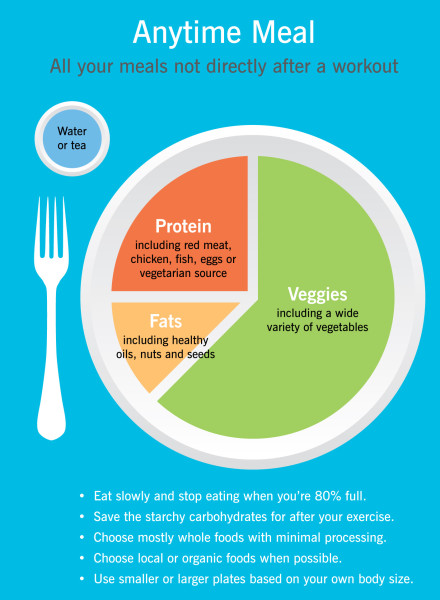Happy Holidays athletes! Tomorrow marks the final day of 2015. Whether you plan on watching the ball drop from your couch or poppin’ bottles at the club, you’ll likely spend the first day of the year pondering what lies ahead if you haven’t started to already. If you checked out my last post, you may have already reviewed your goals from last year or started planning for 2016. If you’re looking to start off the year with incredible momentum surrounded by a community of like-minded individuals, look no further. Healthy Habits 2.0 is kicking off in early January and with making 2016 your best year as my top priority, I’m putting the finishing touches on the welcome kit that will be provided to all participants at the Healthy Habits kick-off meetings.
One of the resources I’ll be providing in this post (and in the kit) addresses a question I get from every client: “what should I eat?”. Unfortunately, everyone is different and answering this question requires some level of experimentation and measurement to get it just right. Despite this reality, the USDA continues to offer guidelines in the form of their MyPlate template. While this is an improvement from the former Food Pyramid most of us grew up with, it leaves much to be desired as it fails to account for food allergies/sensitivities, physical activity, and/or nutrient timing. The U.S. is not alone in this vain either. Dietary committees from other countries offer their own versions of MyPlate with similar recommendations. In a surprising turn of events this year, Sweden became the first country to change their guidelines in support of a low-carb, high fat diet, once again leaving us all scratching our heads…or banging them against the wall.
In studying over 100 dietary theories and sports and exercise nutrition, it never ceases to amaze me how many differences of opinion there are on this matter. As part of my practice, I do my best to exercise diligence in identifying the common threads across the vast sources of information tied to nutrition. If there is one thing I’ve found as a universal truth across every dietary theory it is simply this: almost everyone should be eating more vegetables. For this reason, I can confidently validate the guidance offered through Precision Nutrition’s version of MyPlate seen below.

Some of you might look at this and say, “Wait a minute. Isn’t this just a representation of the Paleo diet?” Arguably, yes, this could be considered a well balanced “paleo” meal. That said, if you take the time to read the fine print, you’ll notice a recommendation to consume starchy carbohydrates post-workout. This includes foods like potatoes, rice, or oatmeal, all of which would NOT be considered acceptable by Paleo standards. This is also why Precision Nutrition aptly names this their “Anytime plate”, meaning this should serve as a guideline for what every meal should look like outside of your pre and post-workout meals.
As part of the Healthy Habits program, we will be diving into why this recommendation makes sense and implementing habits that allow you to make adjustments incrementally at a pace that is manageable and sustainable. This method is proven to help you build confidence and get comfortable with lifestyle changes versus the 21 or 30-day challenge approach of making changes all at once, often resulting in a deprivation fueled binge.
Healthy Habits sign up will last through Sunday, January 10th with the kick-off meetings taking place on Monday, January 11th at Union Station from 5:30pm – 6:30pm and on Wednesday, January 12th at Printers Row from 5:30pm – 6:30pm. Registration is filling up quickly and we’ll be capping the program at 30 participants. You can learn more and sign up at the page below.

